Two Days of Amazon Basin Indoctrination
It is really difficult to beat a river's edge sunrise in the Pampas. The squelching humidity amplifies the lower end of the color spectrum and seems to make the fire flash of sunrise linger unnaturally long.
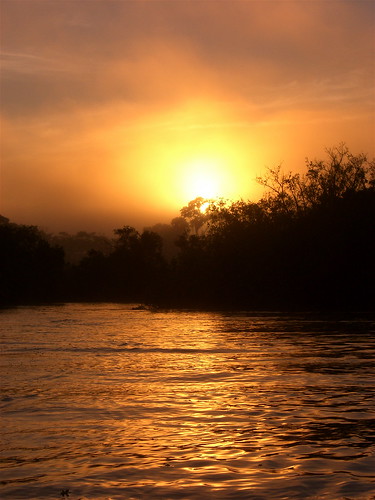
But, if you get a little too "spacey" over refracting light, Pedro is more than willing to snap things back into full focus.
Pedro is a wild alligator, which has been supplementally fed at this camp since he was just a couple of feet long. His six-foot plus muscled body would be no match for the incidental tourist. But, then there are those who are willing to place their bets and attempt a "nose pet".
This, however, is not Pedro. Meet Pequeno (Tiny), an eight foot plus black cayman. Pedro lost the back portion of his tale a few years ago to Pequeno. The gators are relatively docile or will run the other way. Cayman, however, are the bulls of the Pampas and will stare you down without intimidation.
Pequeno always had one eye on whomever or whatever was moving and he deserved the same attention in kind. The amazing evolution of the white crane, pictured, is that his feet are a distinct yellow, matching the combination of hazy waters and river mud. Pequeno couldn't be bothered with the colorful feet, as he keeps an eye of the white part.
The camp cook's daughter is cute as can be and probably about six years old. In the morning she plays with squirrel monkeys, but keeps an equal eye out for Pedro.
Breakfast with Barbie is a tabletop affair, even when Pedro is not around. It just seems to make sense to stay elevated when distracted with eating...
... unless, of course, you are eating a piece of fruit and grandpa is standing near. (Note the missing tail section on Pedro.)
The heat of the day builds quickly in the Amazon Basin. It is not even ten in the morning and temperatures are pushing 100 degrees Fahrenheit already. This morning we are on a mission to find an anaconda or maybe a cobra. (Go ahead, sing along... "my anaconda don't want none unless she's got buns hon... baby got back.) But, while on the river, the guide spots a lemur. Do you see it?
Hanging in the trees, this grip equipped, slow motion eating machine fascinated. How could something this slow have survived all these millenia?
A cormorant greeted us with literal open arms or wings if you will. These birds do not come equipped with oil glands, like ducks or geese, to keep water from penetrating their feathers. So, contrary to popular belief, they are not cold (especially in this heat) but are using the sun's energy to dry out water logged wings and plumage. Once sufficiently lightened, they will return to easier flight patterns and eventually dive right back in the water while fishing.
Chasing ever narrowing tributaries, the boat rams into the mud shore and then it is time to trudge into the undergrowth. Considering we are hunting for giant snakes, combined with the number of other field dangers, this random entrance feels a little sketchy.
As several folks on the trek learned, you really don't want to tangle with these swamp wasps.
A local Snail Hawk must be happy and full.
Pushing further from the river banks, the foliage transitions from broad leaved varieties to taller grasses.
If you are ever thirsty in the morning, dew drops funneled down this broad leaf would do the trick, but right now I follow the guide's lead. Instead, we each pick a large leaf, fold it in half (end to end) and use it as a fan. It is remarkable how this simple trick can break the stillness enough to be felt.
The Pampas is alive with fauna and flora, sometimes occupying the same space. In capturing this flower image, there was the bonus of a bright green grasshopper.
Color is everywhere, once you take the time to notice the ecosystem that exists below the tall vegetation. Snail eggs strike a bright pinkish-orange against the muddy saturated floor.
Taking "point" with the guide, we slog through knee deep humus. In the heat, each sucking footfall withdrawal drives energy out of our stamina reservoir. I've come to realize that the rubber boots supplied are not to keep us dry, but to protect from the sharp grasses and what ever else lives below knee level. (So this is a picture of me taking the picture below.)
Somehow, our guide puts on a convincing show of direction and Anaconda hunting skills. He had prepared us for which dangers to be aware.
So, this is a perfectly good reason for wearing knee high rubber Wellingtons. Small cobras, just like rattle snakes, are actually far more venomous, i.e. deadly, than the adult counterpart. We were just as happy to leave the "catch and release" to the guide.
The group "fun card" was punched long ago. Ambient temperature is actually a good ten degrees hotter in the grass swamps than directly next to the river and we are drained and wilting. These grasses are a solid six feet high and no joy to push through.
There were flashes of relief, in the form of visual interest. The shear volume of blooming plant life is an energy boost.
So, to increase our odds of flushing out an anaconda the group split in two, fanning towards a focal point. (Are you feeling the dragging sense of time?)
Finally, the two guides walked off towards the horizon, in search of serpents. Shaded by the trees, we joked that they were really killing time, smoking a cigarette, just over the horizon. The entire group had had enough, leading some to seek solitude leaning against a tree trunk. My cure was to climb into the broad branches to catch wisps of breeze wandering about at ten feet or more off the ground.
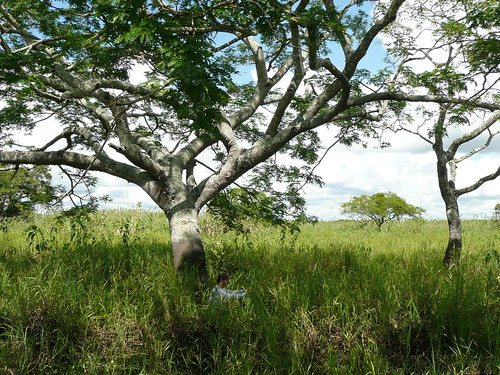
Mercifully, the guides called off the search, but not before pointing out a depression in the grass and proclaiming it to be an anaconda nest. (Either that or they were busy creating the gringo illusion, while just out of sight.)
So, after lunch I opted for the hammock while the rest of the crew went piranha fishing. This was fun about four weeks earlier in the Brazilian Pantanal so there was no need for a repeat performance. Despite of, or maybe because of, my group diminishing nap, the eco-tourist fishing energy was high.
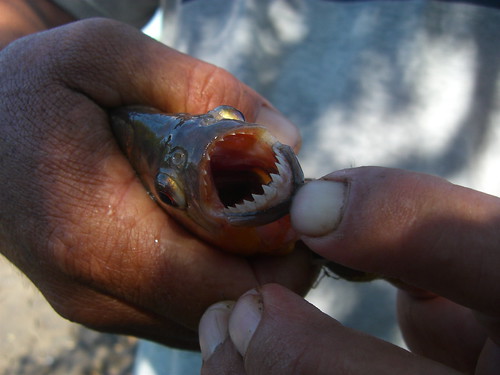

The British contingent led the charge in piranha count...
... and by early afternoon the grass improvised stringer was complete. The fishing crew unselfishly shared the fried prize with me over dinner and the delicate white meat was just as sweet as remembered. (Thanks for the pictures, Lipika.)
The late afternoon created a hunting expedition of another sort. This time we sought pink dolphins, not to eat, but to swim with.
These creatures are amazingly curious, swimming right into your midst. A playful nudge or grazing passing by is not uncommon. I wish the flood of tourists would not have converged, because the jabbering Hebrew disturbance in the pristine setting was so out of place it was even beginning to annoy our two segregated travelers.
Once again, we road in our motorized canoe, broached the mud bank and hiked into the swampy grasslands for a solar sensation.
So dense was the humidity that the penetrating orange pierced the visual horizon and then was lost behind a shade of aqueous airborne greying.
There were two animal sightings needed to declare the trip a success. First, the pink dolphins and they rose to the occasion almost immediately. Second, the capibara, waited until the final moments. Capibara are the largest rodents in the world, weighing in at about the mass of a large pony or small horse. Supposedly, the small ones are good eating, so these several hundred pound monsters should be left alone to breed and make the more readily digestible variety.
Leaving our camp was a little bitter sweet. The experience was well worth the effort, but life is hard out here. The conveniences of unheated showers, toilets, beds, and great food are all here, but the heat with humidity was too high to make any of the added benefits comforts.
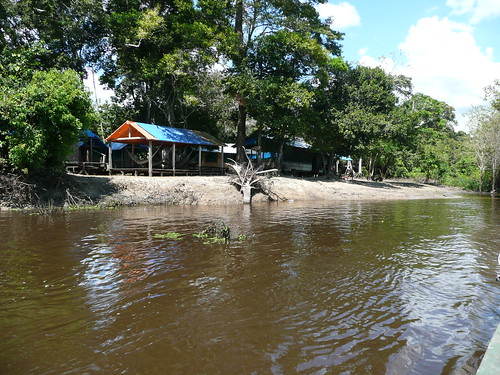
The good thing was that our group was smiling and we really did have a good time together. The surprise of the journey was when our Israeli trekkers recognized the vast disturbance and inconsideration of their countrymen and women. One is seeking a degree in diplomatic relations. It was not hard for him to admit that the world's first direct contact impression of Israeli's, as demonstrated by it's traveling youth, is a bad one and will be a public relations obstacle to overcome.
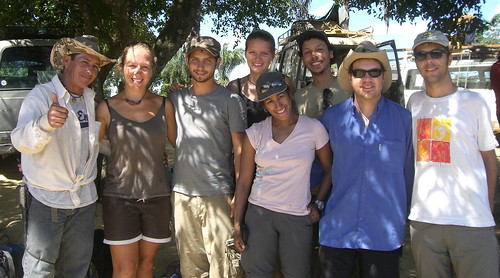
So now, the five hour reverse path back to Rurrenabaque was at hand. The Cambodian architecture still fascinated...
... as did our Bolivian driver, ...

... who still persistently drove on the wrong side of the road. (Now, the wrong side has been taken in each direction. Go figure?)
And, the head-on game of "chicken" persisted with on-coming tractor trailers.
The hours could not pass fast enough on this kidney and lumbar jarring transit. As the trees became more prevalent, passing in the rear view mirror, we gathered energy because they were the tale-tell signs that Rurrenabaque was approaching.
Damn, did this little back-water town ever feel sweet! We were ready to throw digestive discretion to the wind and drink as many crushed ice or blended cold drinks as the evening would allow.
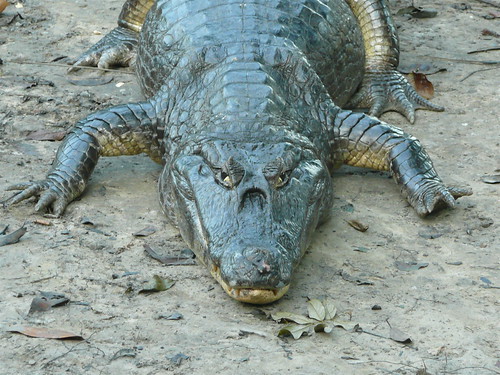
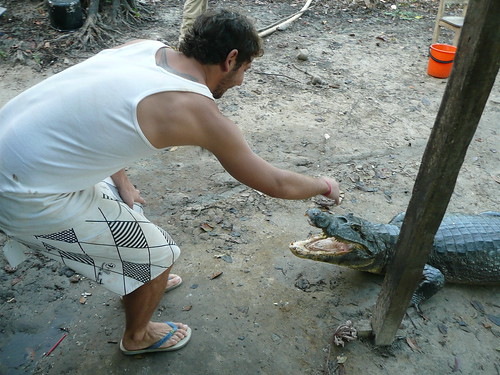
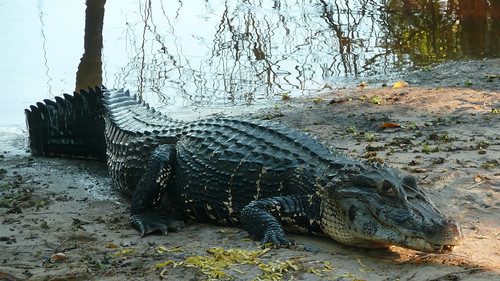
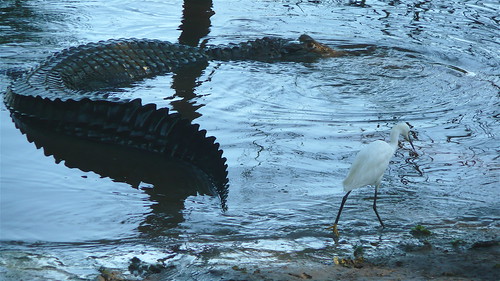
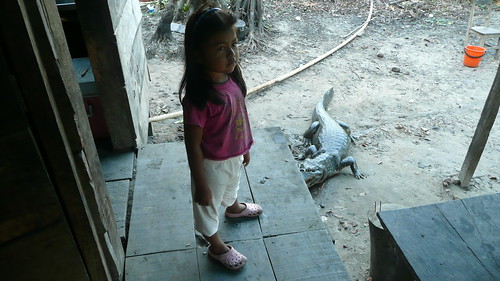
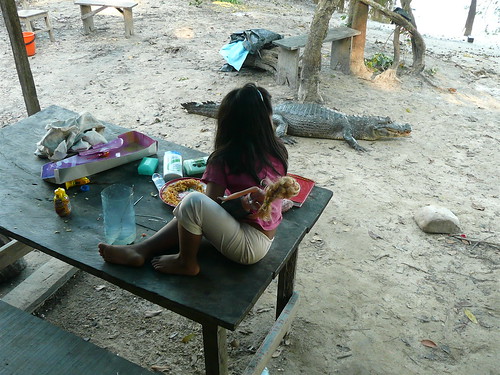
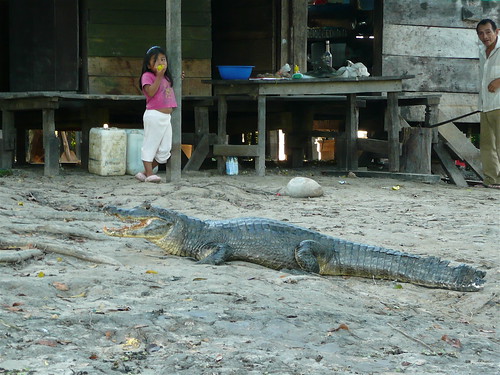
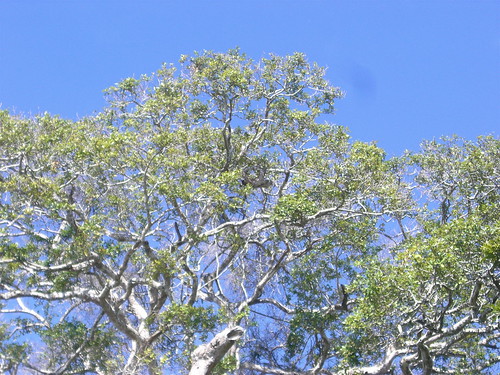
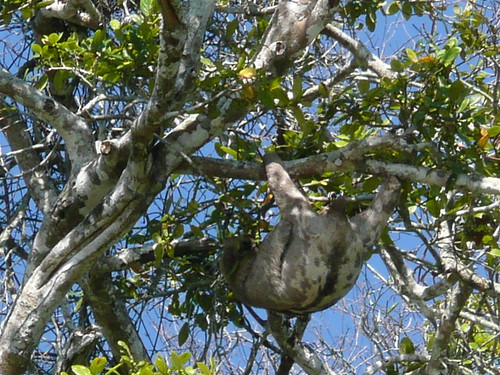
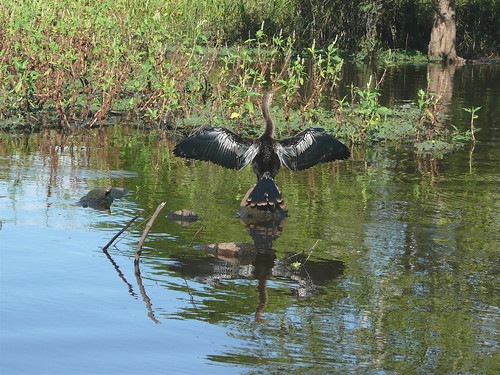
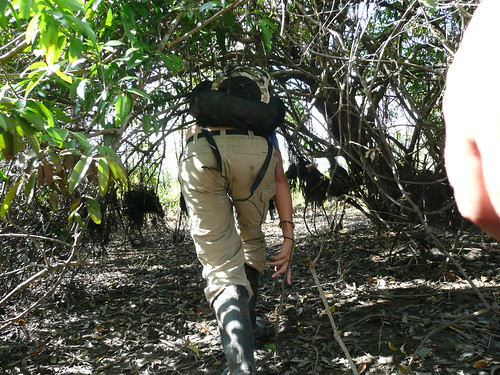
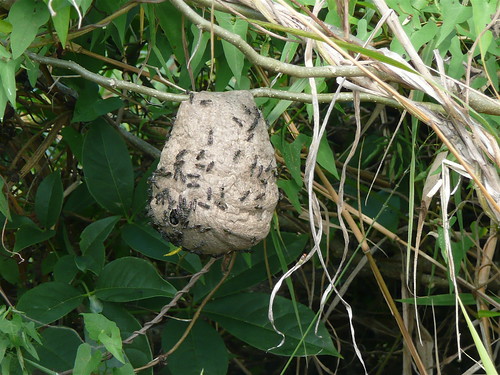
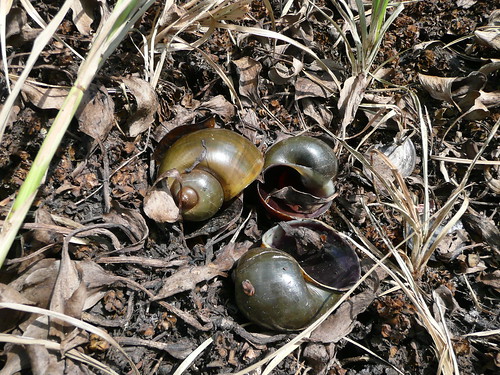
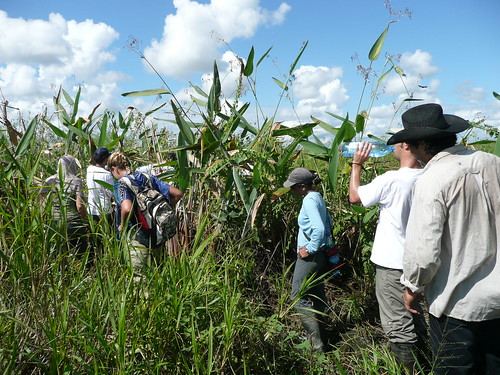

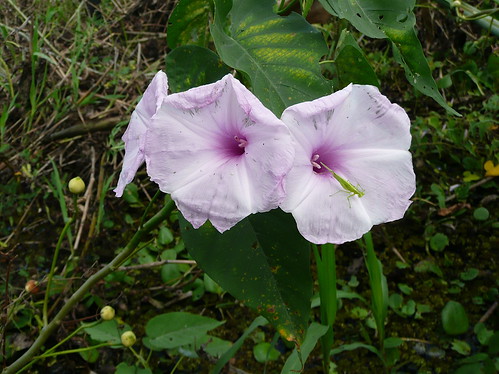



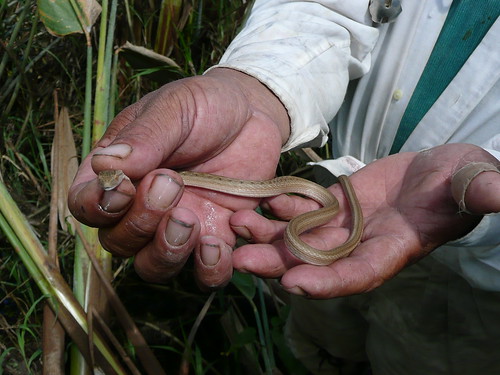
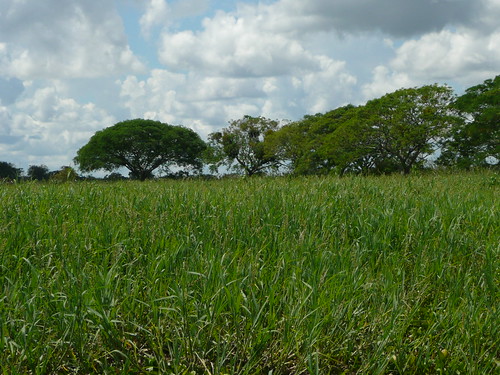
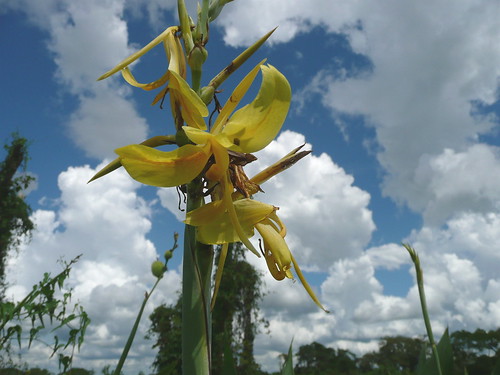
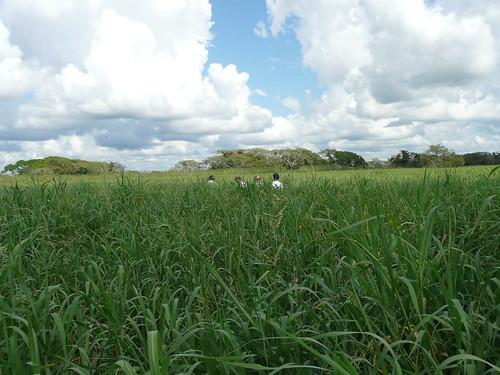
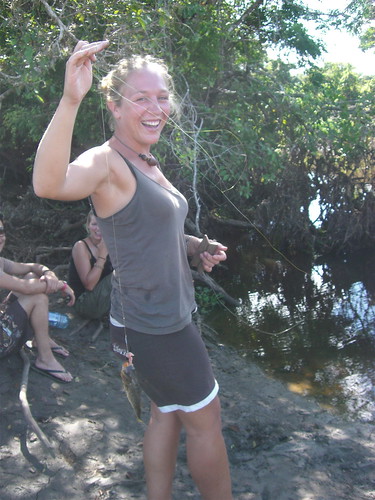
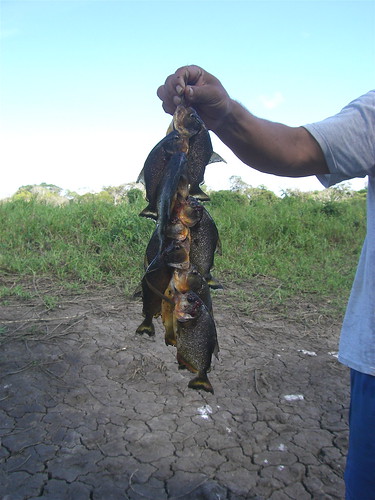
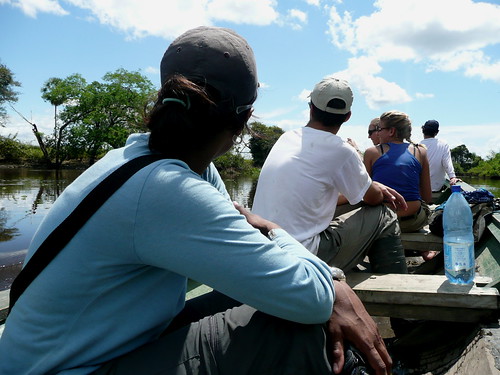
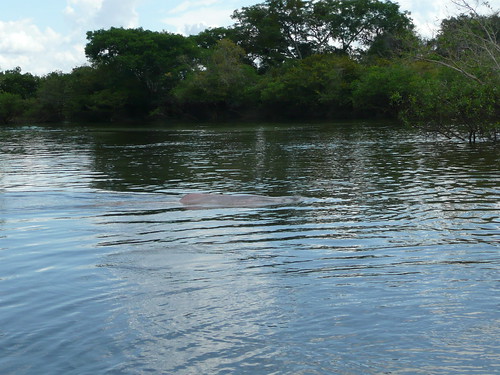


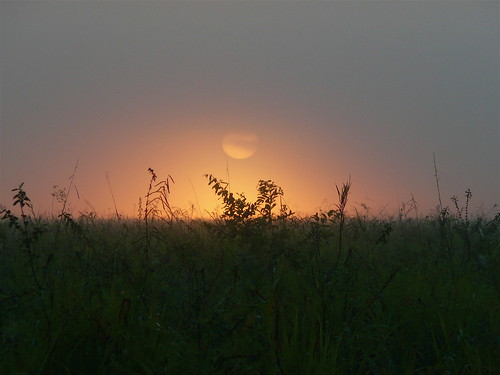

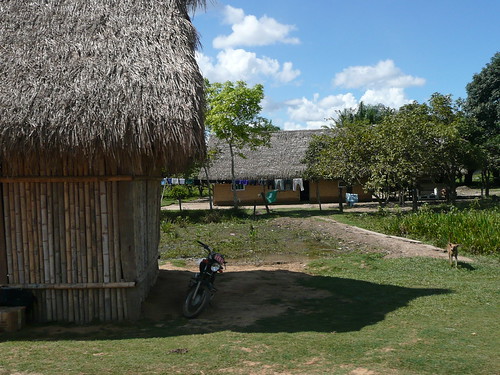

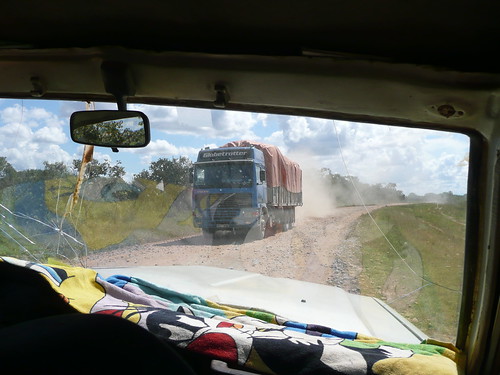
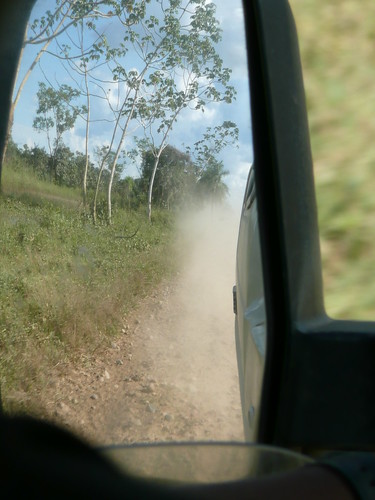
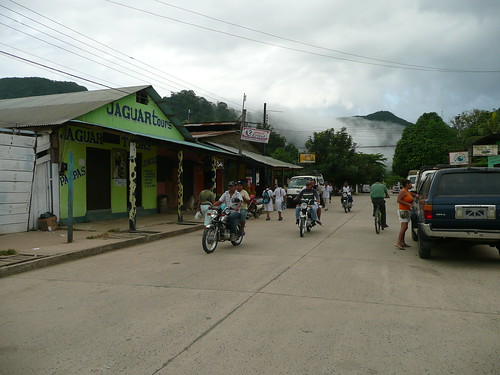
No comments:
Post a Comment